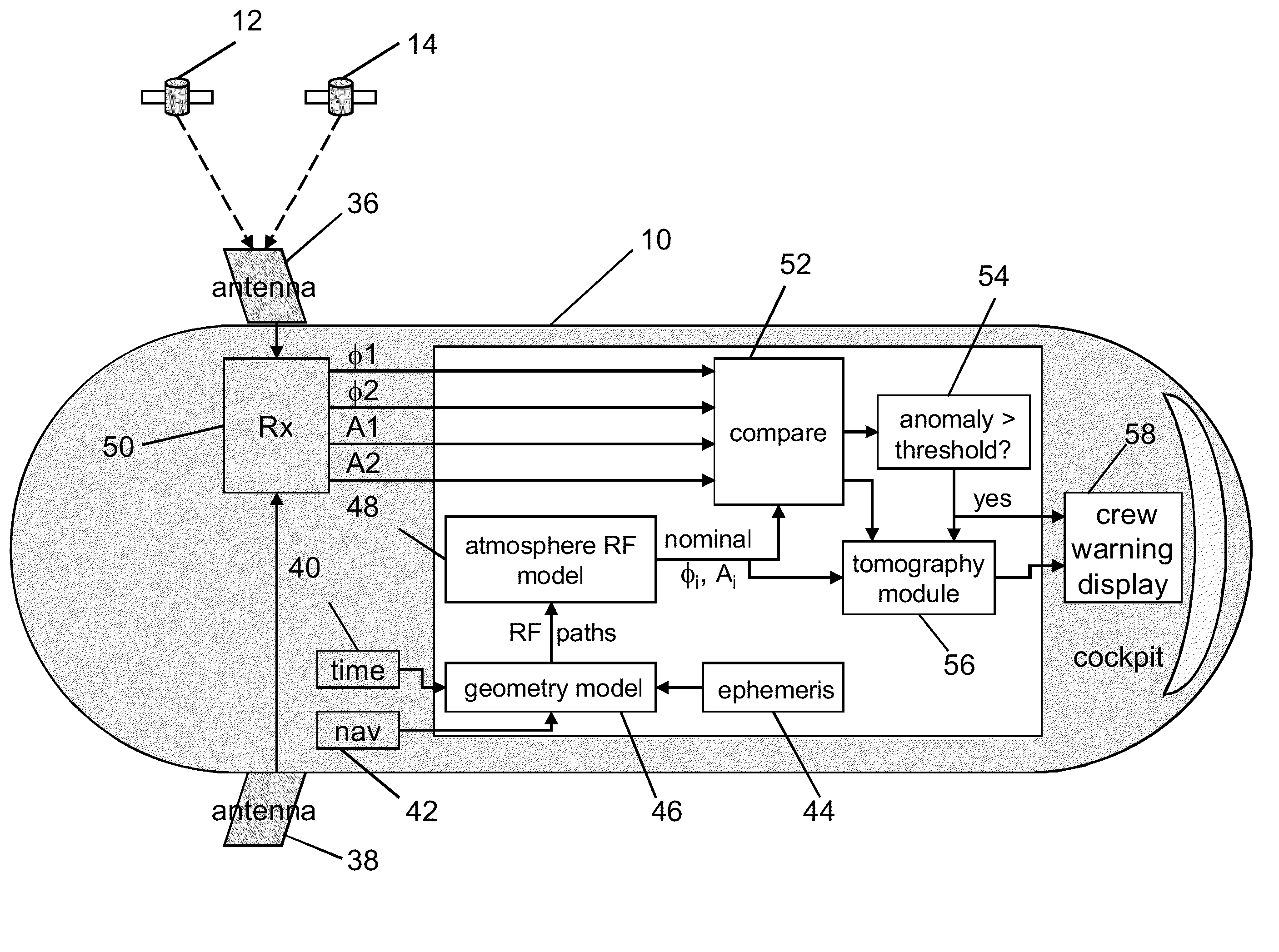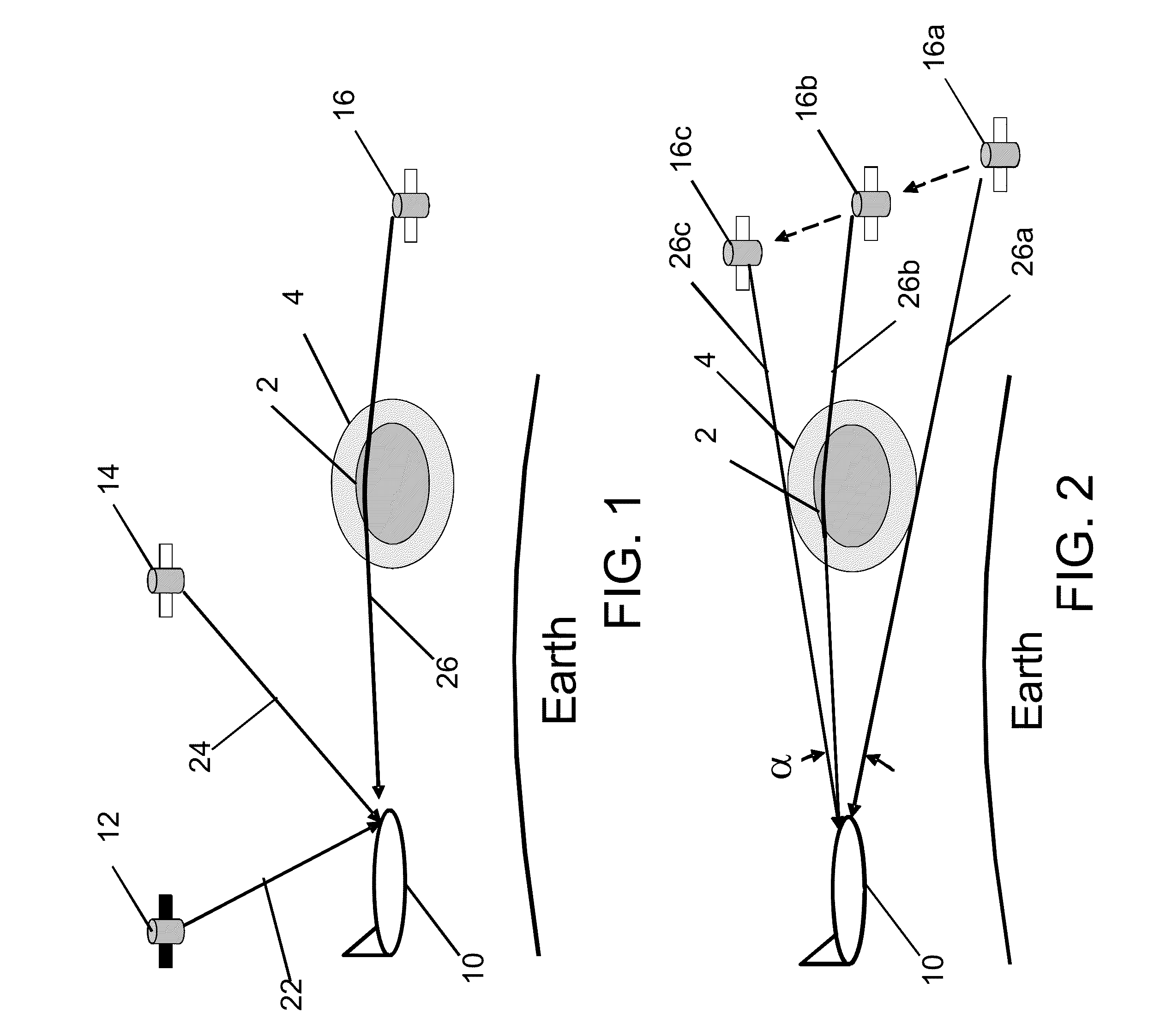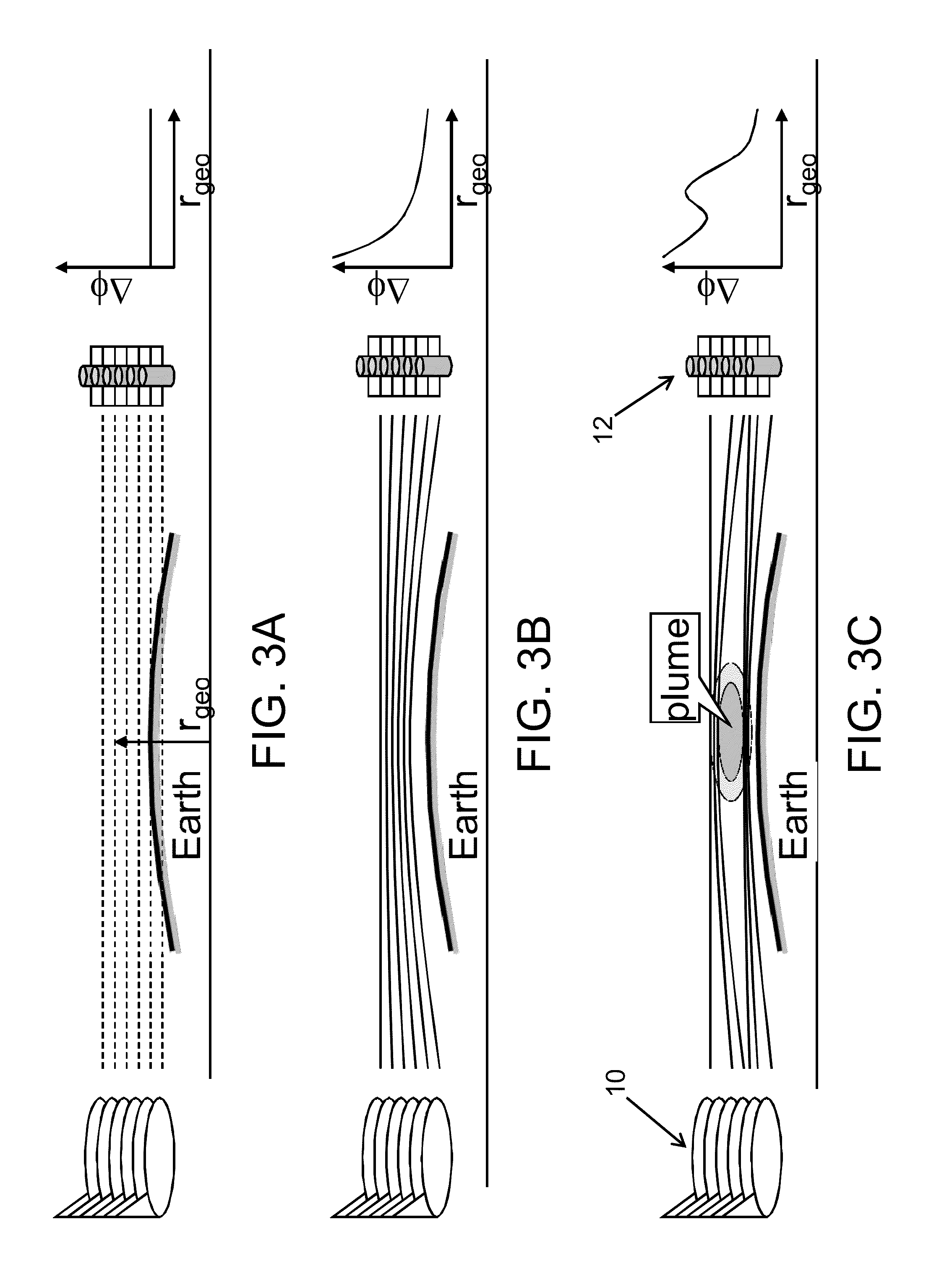Systems and methods for remote detection of volcanic plumes using satellite signals
a satellite signal and remote detection technology, applied in the field of remote detection of volcanic plumes, can solve the problems of affecting affecting the safety of people and livestock, and threatening the health of flying jet aircraft, so as to improve the accuracy of phase shift measurements, improve the availability of transmitted signals, and improve the coverage of the atmosphere
- Summary
- Abstract
- Description
- Claims
- Application Information
AI Technical Summary
Benefits of technology
Problems solved by technology
Method used
Image
Examples
Embodiment Construction
[0034]The invention solves the problem of remotely detecting volcanic plumes, including those embedded in clouds, by providing a system that can be installed onboard a mobile platform, such as an aircraft, a satellite, a weather balloon, a ship or a buoy. The volcanic plume detection system tracks RF signals (such as GPS signals from satellites) arriving at the mobile platform, and warns the pilot when characteristics of the RF signals indicate the likely presence of a volcanic plume. More specifically, the system in accordance with one embodiment utilizes the refractive properties of hydrogen sulfide (H2S), a gas that is abundant in nearly all volcanic eruptions, to infer the presence of a volcanic plume. The measured phase shifts of radio signals from satellites are used to measure the atmospheric index of refraction at cruise altitude. A typical phase shift pattern produced by a volcanic plume is compared to the phase pattern detected by the onboard system. The pilot is alerted w...
PUM
 Login to View More
Login to View More Abstract
Description
Claims
Application Information
 Login to View More
Login to View More - R&D
- Intellectual Property
- Life Sciences
- Materials
- Tech Scout
- Unparalleled Data Quality
- Higher Quality Content
- 60% Fewer Hallucinations
Browse by: Latest US Patents, China's latest patents, Technical Efficacy Thesaurus, Application Domain, Technology Topic, Popular Technical Reports.
© 2025 PatSnap. All rights reserved.Legal|Privacy policy|Modern Slavery Act Transparency Statement|Sitemap|About US| Contact US: help@patsnap.com



